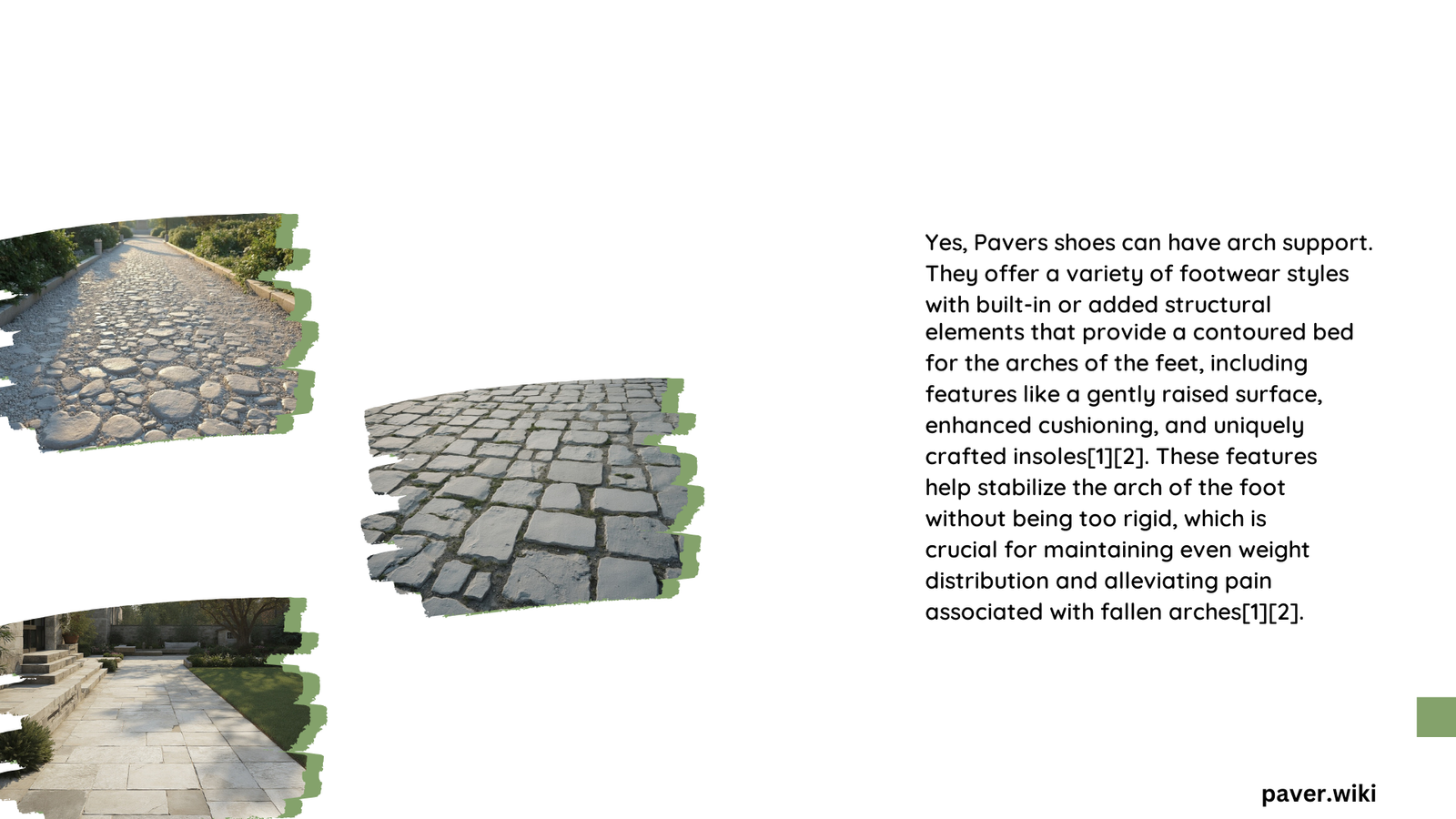Pavers are complex architectural elements that do not inherently provide direct arch support like orthopedic footwear. However, specialized paving systems utilize advanced installation techniques involving adjustable pedestals, strategic base preparation, and innovative design principles that can create a stable, level surface mimicking supportive structural characteristics. Understanding these technical nuances reveals how professional paver installations can optimize load distribution and user comfort.
What Are Pavers and Their Structural Characteristics?
Pavers represent modular construction materials used in landscaping, outdoor flooring, and architectural design. While they do not naturally possess arch support like specialized footwear, professional installation methods can create surfaces that provide remarkable stability and comfort.
How Do Pavers Achieve Structural Stability?
Pedestal Support Systems
- Adjustable Height Pedestals: Enable precise leveling
- Load Distribution: Spread weight evenly across surface
- Drainage Optimization: Create slight slope for water management
| Pedestal Type | Load Capacity | Adjustability | Primary Function |
|---|---|---|---|
| Fixed Height | Low-Medium | No | Basic Support |
| Adjustable | High | Yes | Precision Leveling |
| Compensator | Medium | Partial | Surface Correction |
What Factors Influence Paver Structural Performance?
Base Preparation Techniques
- Substrate Compaction
- Use AASHTO No. 57 stone
- Implement rigid biaxial geogrid
-
Ensure even, stable foundation
-
Material Selection
- Concrete pavers
- Natural stone variants
- Porcelain architectural tiles
Can Pavers Provide Comfort Similar to Arch Support?
While pavers cannot replace orthopedic footwear, professional installation techniques can create surfaces that:
– Minimize uneven settlements
– Distribute weight effectively
– Reduce potential tripping hazards
– Provide stable walking experiences
Technical Considerations for Optimal Paver Performance
Installation Best Practices
- Maintain precise joint spacing
- Use integral joint spacers
- Implement protection plates
- Follow manufacturer guidelines
- Consider environmental factors
Potential Limitations of Paver Arch Support
Challenges in Achieving Perfect Support:
– Varying soil conditions
– Environmental stress
– Complex terrain requirements
– Limited inherent flexibility
Conclusion

Professional paver installations can create surfaces with characteristics resembling arch support through strategic design, advanced pedestal systems, and meticulous base preparation. While not a direct replacement for orthopedic solutions, well-designed paver systems offer remarkable stability and comfort.
Recommendations for Optimal Paver Performance
- Consult professional installers
- Select appropriate pedestal systems
- Prioritize precise base preparation
- Consider environmental constraints
Key Takeaways
- Pavers do not naturally provide arch support
- Professional techniques can optimize surface stability
- Pedestal systems are crucial for structural integrity
- Material selection impacts overall performance
Technical Specifications Matter
The effectiveness of paver arch support depends on:
– Installation methodology
– Substrate preparation
– Pedestal quality
– Material selection
Pro Tip: Always work with certified professionals who understand complex paving system requirements.
